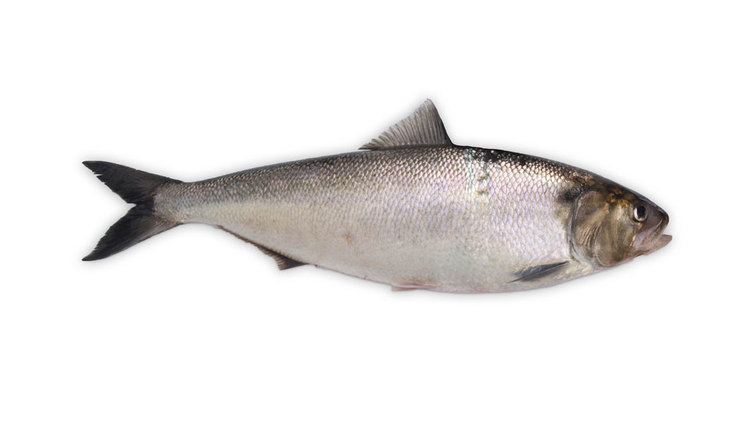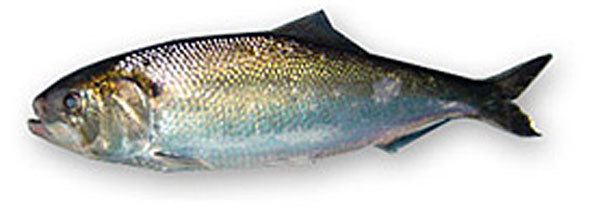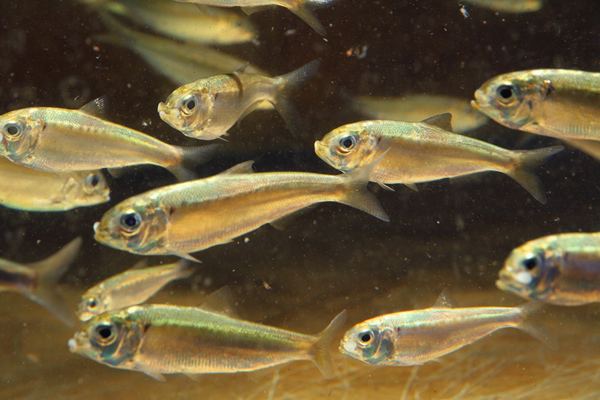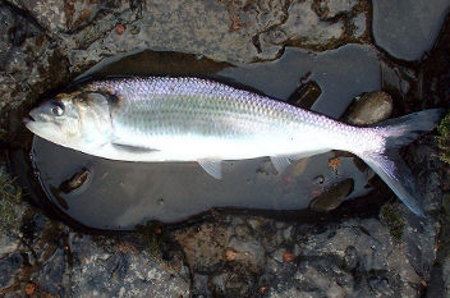Subfamily Alosinae Rank Species | Phylum Chordata Genus Alosa Higher classification Alosa | |
 | ||
Similar Twait shad, Alosa, European river lamprey, Alosa agone, Sea lamprey | ||
A chance for the allis shad
The allis shad (Alosa alosa) is a widespread Northeast Atlantic species of fish in the herring family Clupeidae. It is an anadromous fish which migrates into fresh water to spawn. It is found in the eastern Atlantic Ocean, the western Baltic Sea and the western Mediterranean Sea. In appearance it resembles an Atlantic herring but has a distinctive dark spot behind the gill cover and sometimes a row of up to six spots behind this. It sometimes hybridises with the twait shad (A. fallax). This fish becomes mature when three or more years old and migrates to estuaries, later swimming up rivers to spawn. Populations of this fish have declined due to overfishing, pollution and habitat destruction. Conservation of this species is covered by Appendix III of the Bern Convention and Appendix II and V of the European Community Habitats Directive.
Contents
- A chance for the allis shad
- Allis shad bergerac france
- Description
- Distribution
- Biology and lifecycle
- Population reduction
- Conservation
- References

Allis shad bergerac france
Description

The allis shad is a typical herring-type fish. It has no lateral line and a somewhat rounded belly. The gill cover is ridged and the scales large. The back is a bluish-green colour and the head brownish with a golden tinge on the operculum. The flanks are silvery, sometimes with a bronzy tinge, and a distinctive large dark spot occurs just behind the gill cover, and occasionally one to six smaller spots behind that. The adult length is typically 30 to 60 cm (12 to 24 in).
Distribution

The allis shad is found in the eastern Atlantic in waters bordering most of Europe and northwestern Africa, and it enters to the western Baltic and western Mediterranean Seas, but it is rare outside France.
Biology and lifecycle

Alosa alosa has a similar lifecycle to that of the twait shad A. fallax. They are known to live in sympatry, and the two species can hybridize. They are anadromous species like many other species in the Alosa genus. However, some record of them being landlocked suggests an ability to adapt well to their environment. They primarily live at sea on feeding grounds and migrate to their spawning grounds between April and June once they are sexually mature. Maturity usually ranges from 3–7 years of age. A. alosa can usually only reproduce once in their lifetimes. Juveniles appear in estuaries and brackish water around July to August. The salinity of brackish water may pose problems to the juveniles migrating from fresh water.
Population reduction

Populations have been reduced primarily by overfishing, pollution, and habitat destruction. The estuarine phase, or the time that they are in the estuaries migrating from spawning grounds to sea, is estimated to have a duration in A. alosa of up to six months. The estimate, however, does not take into account individual variation and/or survival of juveniles in the estuarine phase.
Conservation

Four special areas of conservation have been designated in Ireland where Alosa species have been known to spawn. Alosa alosa "has been placed in Appendix III of the Bern Convention (1979) that lists protected fauna species as well as in Appendix II and V of the European Community Habitats Directive (1992) that list, respectively, species whose conservation requires the designation of special areas of conservation and that are subject to management measures." However, A. alosa is currently under a moratorium (2008) in numerous French watersheds.
